When putting figures of people on the layout do you keep the base and try to hide it or do you cut it off and try to glue the figures in place?
Rick
When putting figures of people on the layout do you keep the base and try to hide it or do you cut it off and try to glue the figures in place?
Rick
None of my figures, and I have lots of them, have bases. But, since yours do, my recommendation is to cut off the bases so the figures look more realistic. I use a small spot of hot glue to hold my figures in place.
Rich
Many of the better sculpts of HO figures have integral bases. I always remove them.
When removing a base, use a sharp #11 Xacto blade and trim away all of the base, in very small pieces, except for the parts under the shoes/feet. This takes a while, and when you are doen it will look like the figure is on huge platform shoes.
Then, using a #17 Xacto blade, cut off the small remaining part under the shoes/feet in one chunk.
I mount my figures with 0.010" steel wire drilled into one leg.
I use the steel wire to hold them on a cork while painting.

-Kevin
Most of the better fiqueres come without bases.
I wasn’t aware of that. I haven’t really gotten that far, and the few figures I have were given to me many years ago by my young children (in other words my wife.) She would not have been shopping in a place with higher end stuff so mine have bases.
Rick
Woodland Scenics and Preiser are two great sources for figures without bases.
Rich
I still have a few old figures I had from the 50s. There are a few metal ones and the rest are plastic, mostly uniformed men standing stiffly. I take those green-suited guys and paint them, and then place them inside buildings, often behind sales counters or bars. Mostly hidden, visitors can’t even see their feet.
Regardless of bases or not, I usually stick them down with a bit of Aileen’s Tacky Glue and support them in place until the glue sets. Aileen’s sets in a few hours and holds in place, but can easily be removed for re-positioning. It’s a craft store item and very inexpensive. Practice good “glue hygiene,” clean the applicator head and keep the container sealed when not in use, and it will last a long while. It’s not for joints that may be stressed or for heavy items.
Little people are my thing. I glue all my sitting figures in place and where standing figures are permanent. Figures that can be moved are attached to a straight pin and dropped in a .02” drilled hole.
I have approximately 1000 figures on my layout of which about 95% are Mel castings.
Seated passengers.
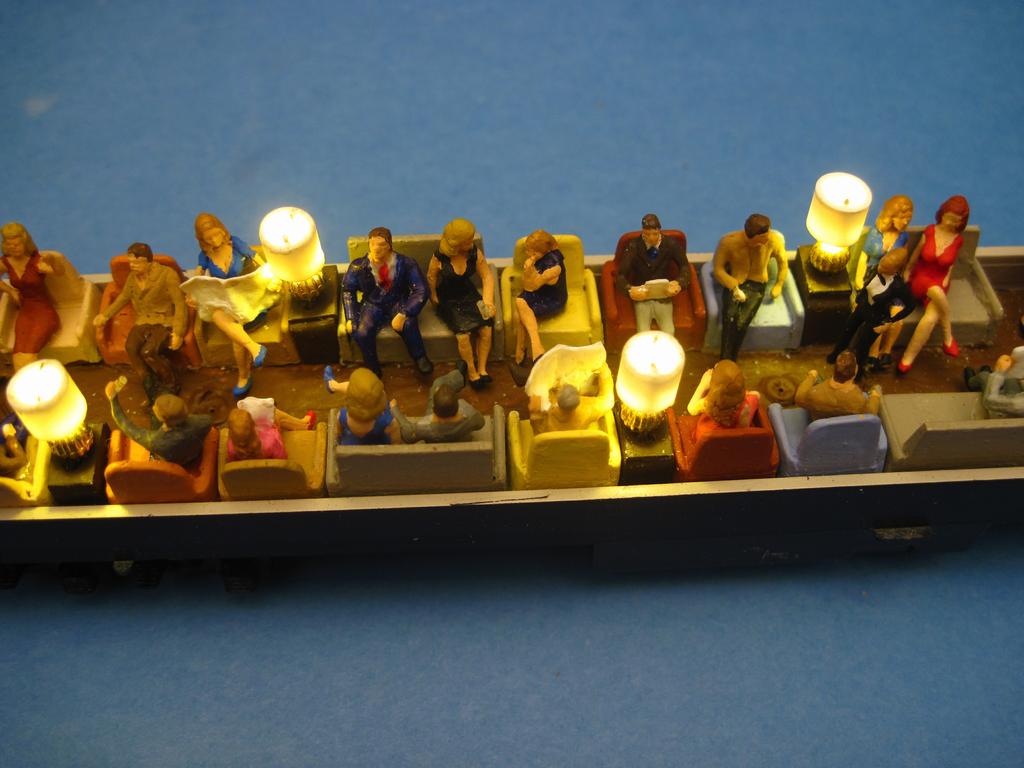
Standing passengers, most mounted on straight pins.
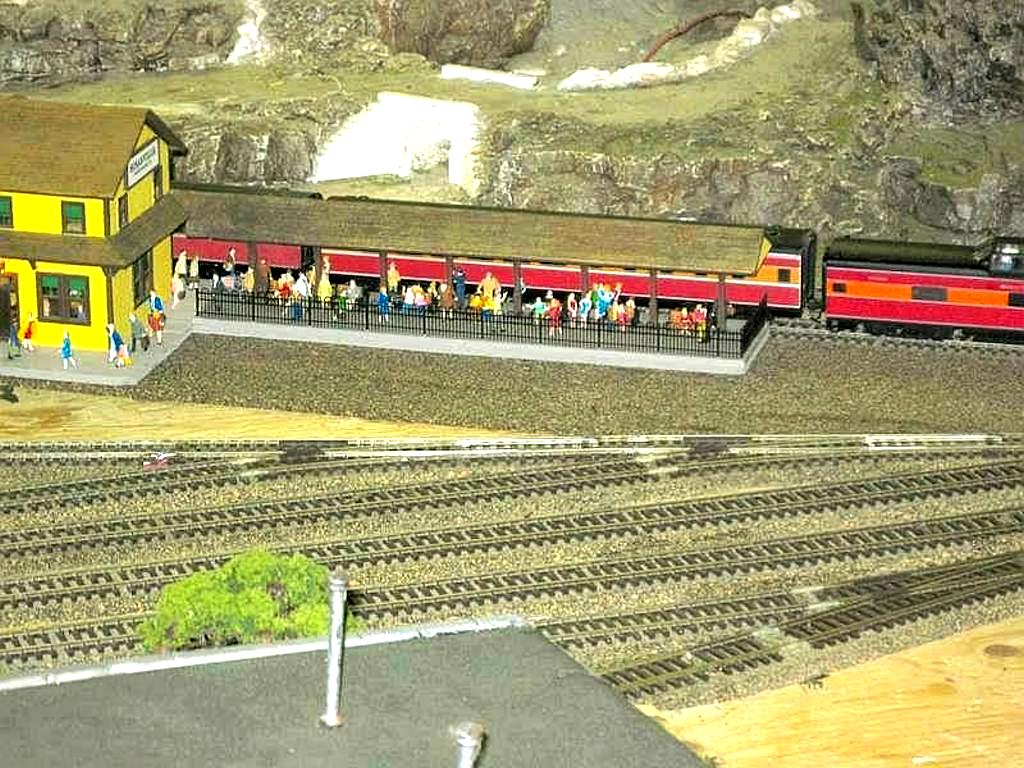
88 total station figures.
I also glue my figures to pins for painting, makes painting them much easier.
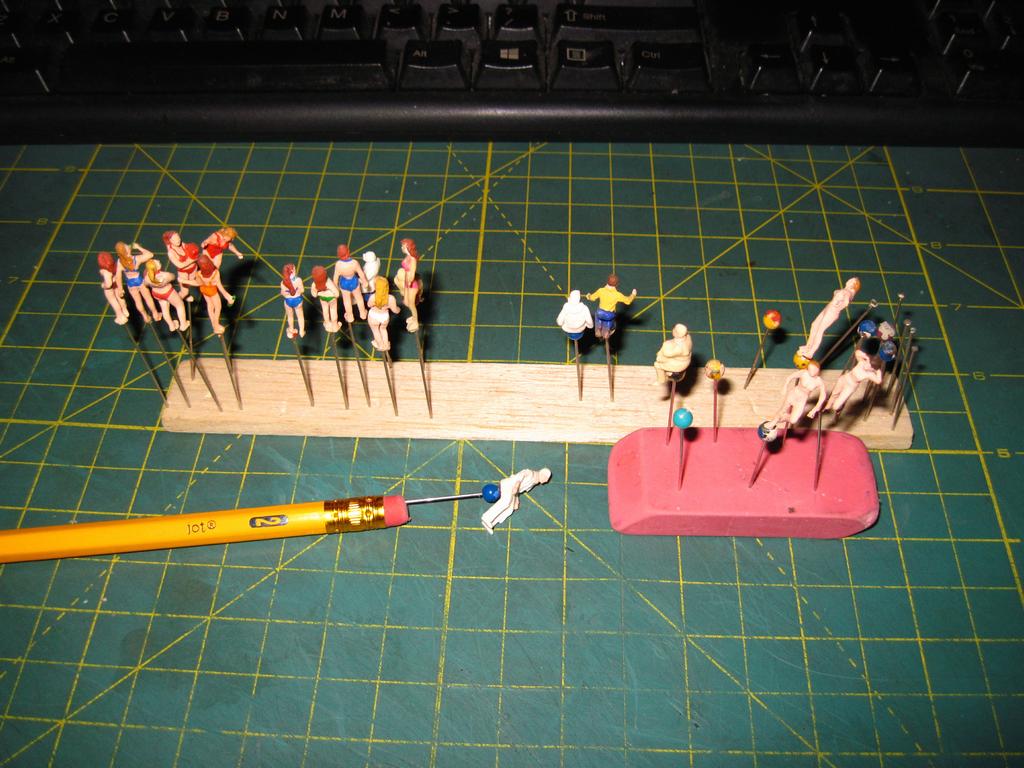
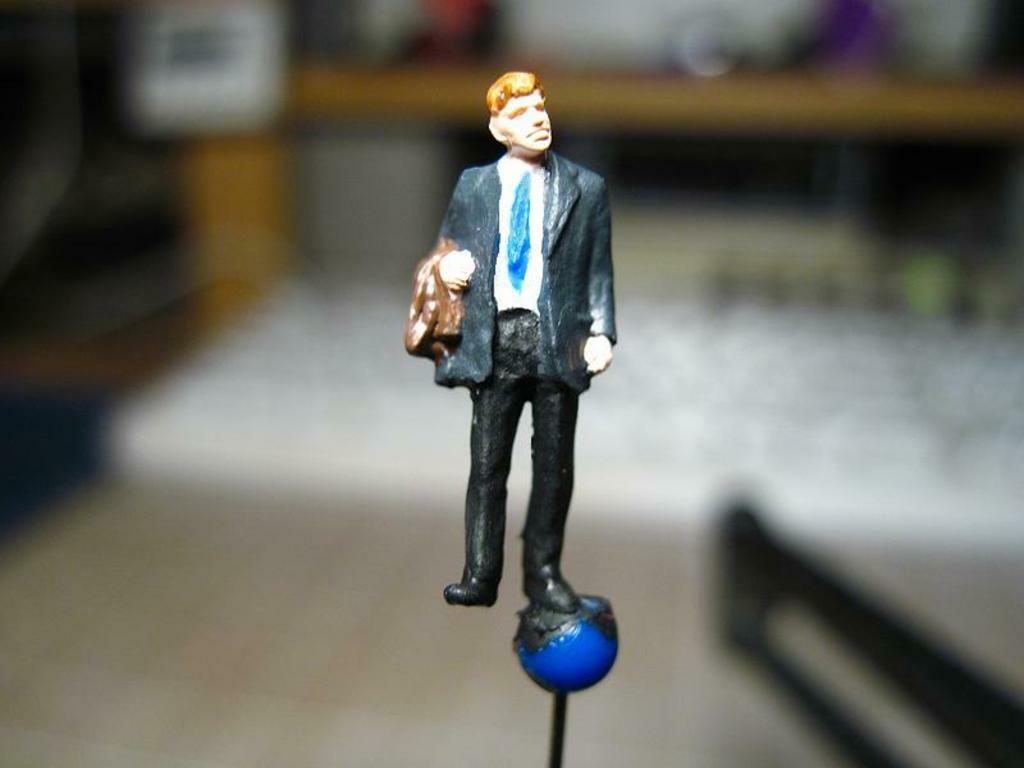
Happy little people everyone.
Mel

My Model Railroad
http://melvineperry.blogspot.com/
Bakersfield, California
Turned 84 in July, aging is definitely not for wimps.
In my opinion, Mel is definitely THE people-person in HO.
I don’t have a lot of people on my layout, yet, but the ones that are there are held in place using Woodland Scenics Accent Glue. It comes with a brush-in-cap, and you simply dab a little glue on the feet (or bum, if it’s a seated figure). Place the figure where you want it, and if you later want it somewhere else, pick it up and relocate it…the glue is re-useable at least for a couple of re-locations.
When it’s lost the stickiness, simply rub off what’s left, and re-coat.
This guy’s been trying to get into his car for ages…
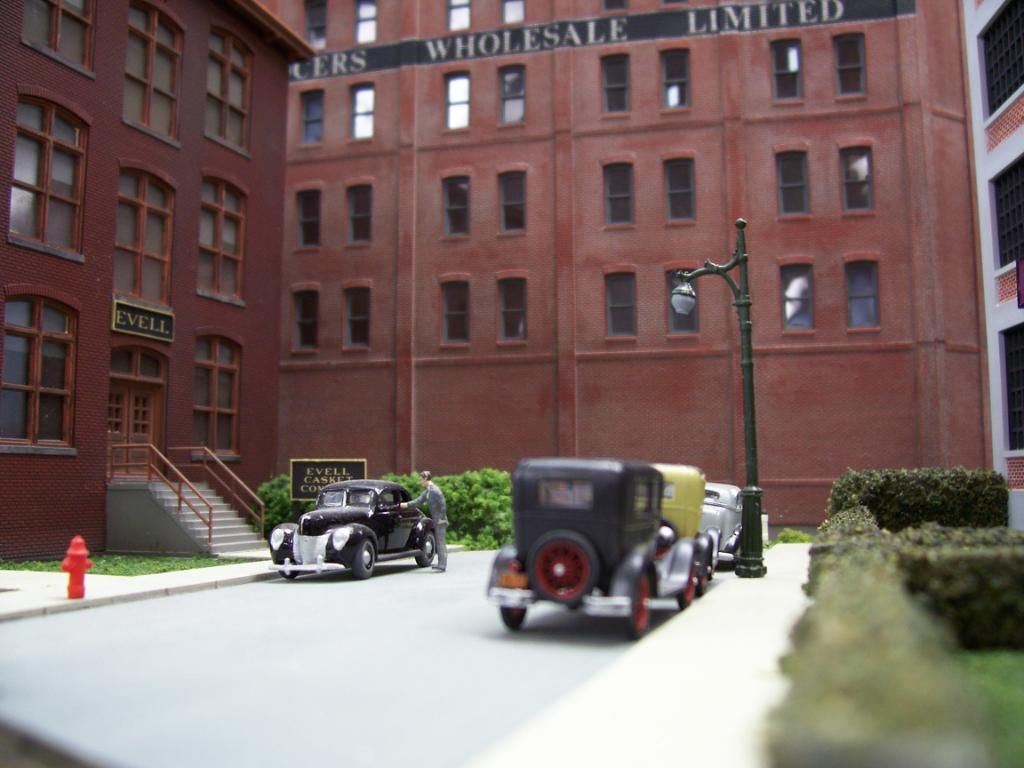
…and has yet to notice that sometimes, it’s not even the same car.
Wayne
I agree Wayne, along with Ed (gmpullman).
When I used to set up my Christmas layout, I used a wax, that I got at a Michael’s store, with just a tiny dab on the feet of the figures, the wax kept them in place.
I don’t remember what it was called.
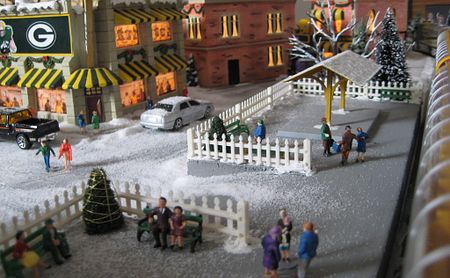
Mike.
In most cases I use WS Senic Accent Glue for most of my people, only got a few on my newv layout but I have at least 100 to place and got rid of a couple hundred more when I moved and went with a smaller layout.
You can even animate your 1:87 figures using micro servos.
Just put the mechanism on the back of the viewing side.

This guy is a Mel resin casting.



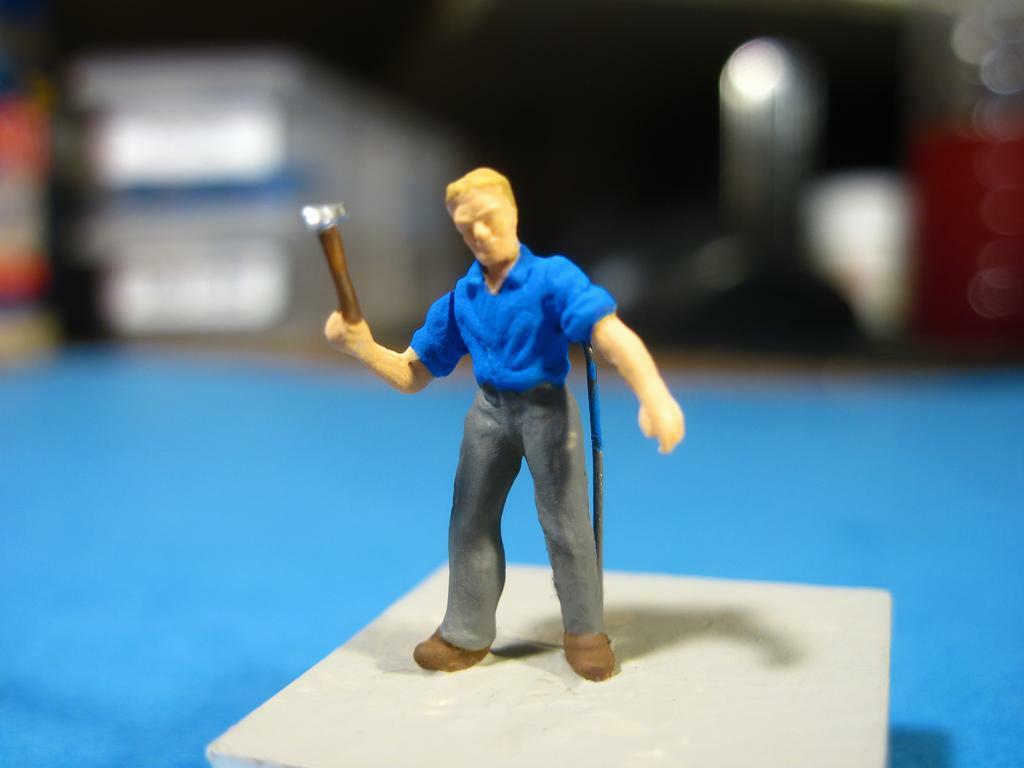
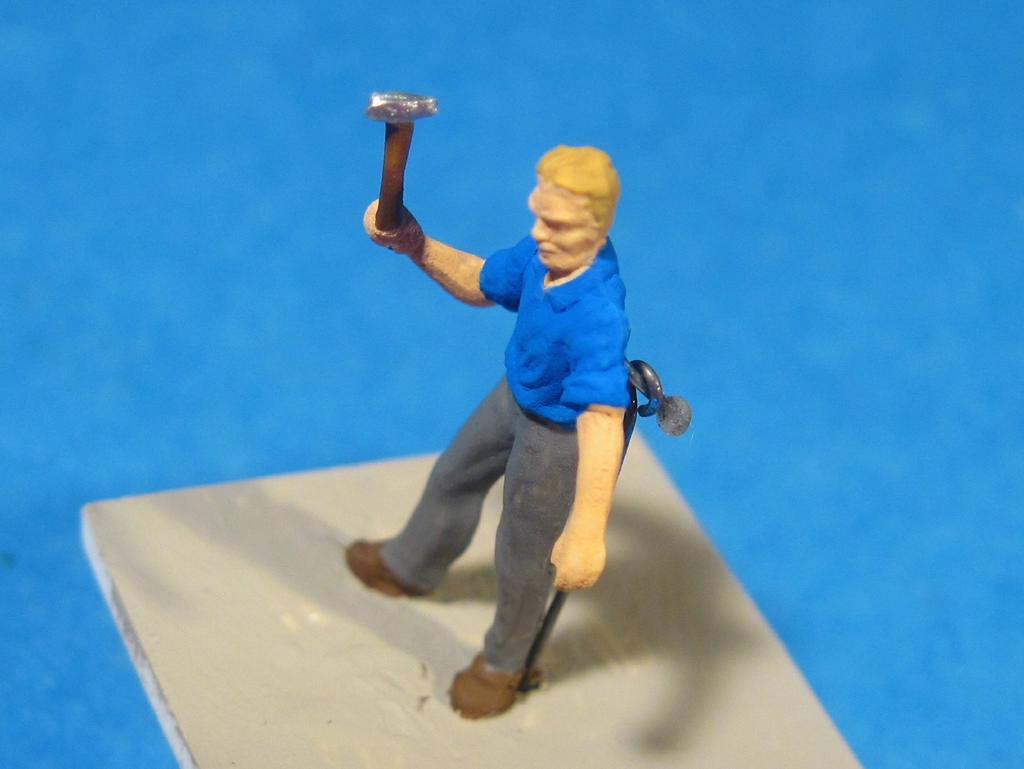
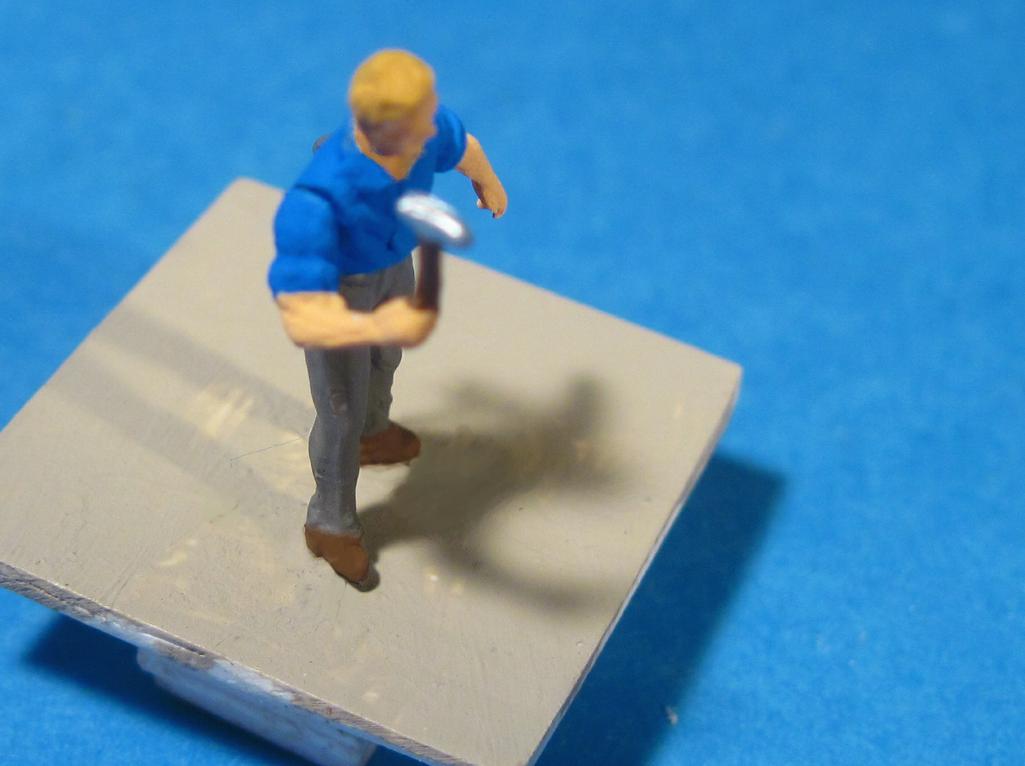
He swings a mean hammer.
Mel

My Model Railroad
http://melvineperry.blogspot.com/
Bakersfield, California
Turned 84 in July, aging is definitely not for wimps.
That is really excellant Mel! I love the servo addition to the figure.
Thanks for sharing!
charles
You’re absolutely right, Mike. My apologies to Ed for not including him.
Wayne
There are many excellent figures that came with molded in bases.
These old AHM figures are great scupltures with lots of detail and loads of character.

-Kevin
No bases to be left on any people. Most of my land surface is foam or scluptamold. I drill a #78 hole appox. 1/8’’ in the foot up in to the leg and insert a 3/8’’ long tapered point at both ends .016’’ brass wire. I like to move my people around some, but some people have stayed in one place for many years. I think I will try the steel wire mentioned above sometime soon, my brass wire can bend if I am to forceful. The first picture is with the people in place and the second picture is showing the wire installed in the foot/leg.


I revived this thread because I am finally going to start adding people to the layout.
I am starting this by adding figures to Roomettes which will be permanently installed inside of buildings so it is imperative that I use a glue that will never give way and will adhere well to Preiser figures and the glossy cardstock Roomettes. Woodland Scenics Accent Glue and Aileen’s have been mentioned as suitable glues as well as wax. Are those the very best to use or would CA (or something else) be more appropriate for a permanent solution?
You want a gap-filling, elastic solution – there is a formula of CA that has ‘rubber particle’ reinforcement in the formula, which is what you’d use if you want CA.
The Pliobond/old Walthers Goo style of ‘glorified rubber cement’ works beautifully if its color is no object. The E6000/‘Shoe Goo’ style stuff should work for some jobs.
Care to explain what makes a “rubber type” adhesive so effective for this application?
Flexibility within the bond combined with strong surface activity for adhesion. There is a comparatively small area for actual adhesion, combined with an irregular fit at contact.
Cyanoacrylate is very strong, but the bond is only a few molecules thick, so something needs to provide ‘strength’ between films – this is part of what the baking-soda ‘acceleration’ does. You can think of it a bit like concrete, with the ‘gap filling’ being provided by the particles. The ‘rubber aggregate’ is slightly different in that the bond is to the rubber, which then does the same thing in the gap that the Pliobond does.
Epoxy is like the opposite of cyanoacrylate (which provides a very strong bond but only between close-fitting surfaces) – it will only be strong if there are more than a few molecules in the joint. If you use this with figures, be careful not to squeeze or ‘starve’ the joint.
Note that, as with Delrin, it will ‘pay’ to make the surfaces chemically ‘activated’ to get good interfacial bond. That would normally be done chemically, or with flame or plasma, in industrial applications; it isn’t easy to find ‘stock’ quantities of activator in resealable hobby quantity.